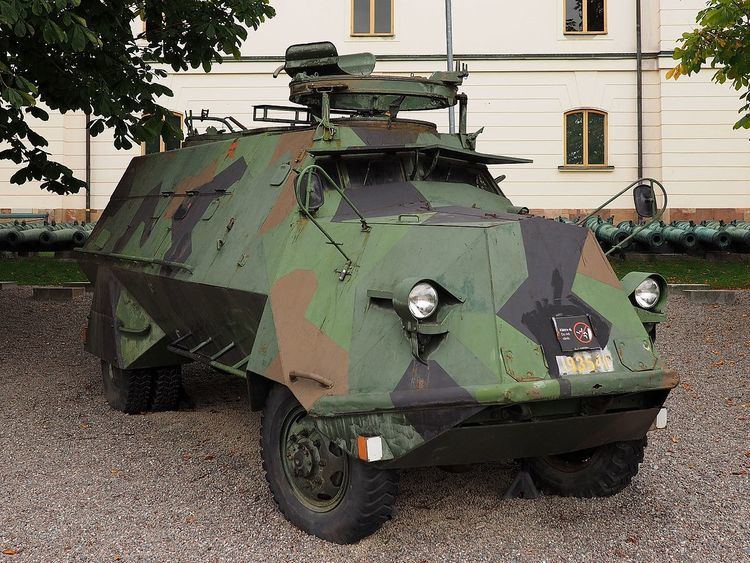Place of origin Sweden Length 6.30 m | Weight 8 500 kg Width 2.30 m | |
 | ||
Type Armoured personnel carrier Crew 3 (commander, driver, gunner) + 7 fully equipped soldiers | ||
Terrängbil m/42 KP (Tgbil m/42 SKP/VKP), meaning "Off-road vehicle [19]42" with a secondary designation of "Scania, Bodywork: Armoured" or "Volvo, Bodywork: Armoured", was the Swedish army's first armoured personnel carrier, developed as a stop-gap measure during World War II.
History
In 1941, when tanks were organized into a unit of their own, it was clear there was a desperate need for a troop carrier able to both keep up with the tanks and provide protection against artillery shrapnel and small-arms fire. Due to the war there were no international suppliers to buy from, so the only option was to develop a domestic solution. AB Landsverk designed an APC consisting of a chassis from a regular army lorry equipped with an armoured shell.
The armour-plates were made by Bofors, Landsverk, Bröderna Hedlund and Karlstads Mekaniska Werkstad and then delivered to Volvo and Scania-Vabis for final assembly. The Volvo and Scania-Vabis versions were known as Tgb m/42 VKP and SKP, respectively. The first approved delivery was made in 1944, after some 38 vehicles had been failed due to tensions caused by welding the hardened steel. This was rectified by switching to a soft-hardened steel and then heating the completed body-work in purpose-built ovens to remove the tensions.
During the 1950s the vehicles were modified with a mounting for a double machine gun on the cab roof and at that time the designations changed to Tgb m/42 VKPF and SKPF (F = Fordonsluftvärn, or vehicle anti-aircraft).
The KP saw combat with Swedish UN forces during the Congo Crisis in the 1961-1964 period (Scania SKPF variant only). 15 KPs were also bought by the UN and used by the Indian and Irish battalions in Congo. An armoured, open top turret for the machine gunner was added to the KPs in Congo after a number of gunners were shot in the abdomen. A few left-behind UN SKPFs were reconditioned and used by the Congolese Army in 1964-65. SKPFs were also deployed by United Nations Peacekeeping Force in Cyprus during the Cypriot intercommunal violence.
In the 1980s and 1990s, many surviving SKPFs of the Swedish Army were modified with armoured roofs and in many other ways, resulting in several new versions.
